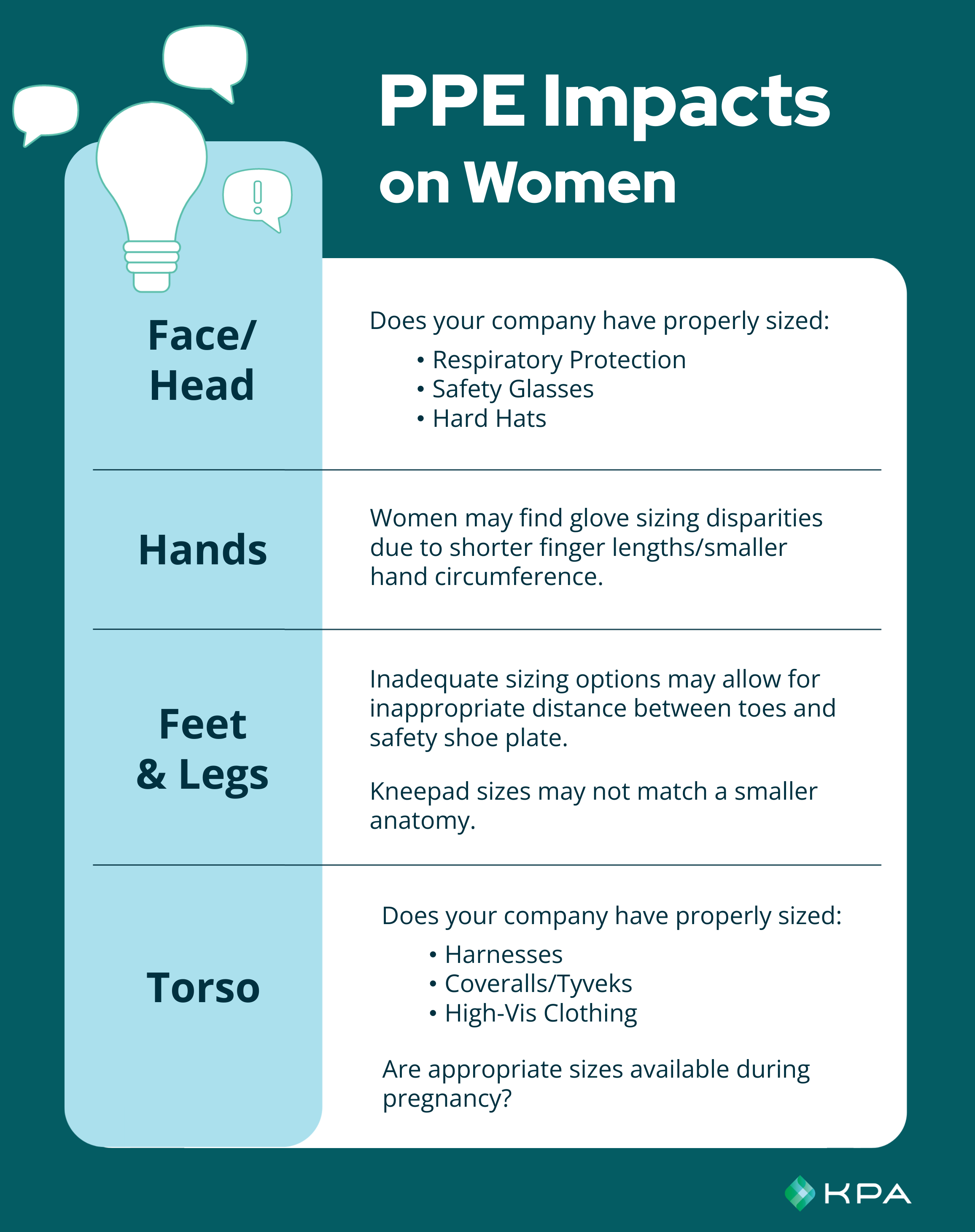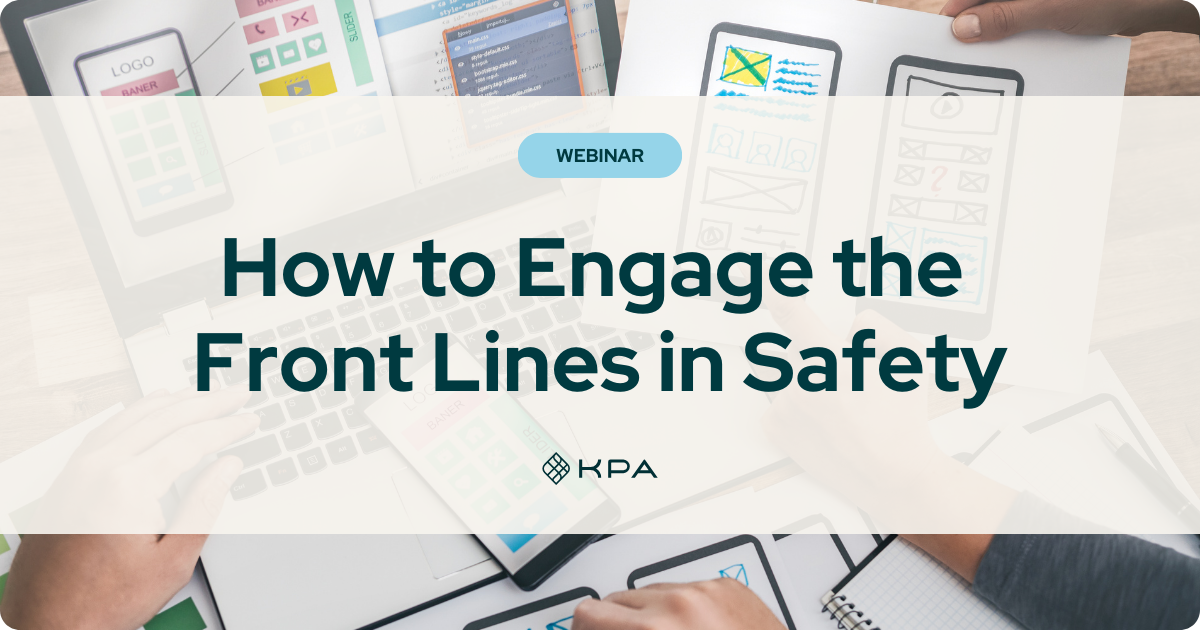Companies with a stated goal of ensuring a safe, healthy, and high-performing workplace may be overlooking areas of risk that impact their employees and their bottom line. Let’s make sure you haven’t overlooked safety and health issues for the women in your workplace. Here’s a scary stat for you. In a study of 3,000 women, 40% of respondents reported experiencing an injury or incident they perceived to be related to their PPE.
Like any unmitigated risk, you’re exposing the company to potential regulatory violations and hits to your workers’ comp and health insurance premiums. Here are a few impacts to think about.
Personal Protective Equipment Impacts on Women’s Safety
Did you know that most personal protective equipment is designed to fit the average-sized man? A men’s PPE in a smaller size doesn’t necessarily equate to an appropriate fit on a female body. This can lead to potential injury.
Inappropriate fit may lead to PPE avoidance. If you think about it, if something’s cumbersome, you’re less likely to use it. Some women steer clear of ill-fitting PPE to avoid being noticed for production slowdowns from impairments due to improperly fitting gear.
Also, replacements may not be as readily available for uncommon sizes. Employers can be less likely to buy in non-bulk quantities if only a small amount of people utilize a certain size.

And NIOSH recommends asking these questions to ensure your workforce is protected:
- Does your workplace provide a range of PPE sizes and fits to accommodate all workers?
- What challenges do you face?
- What solutions are out there?
- What do you need to do to ensure the appropriate equipment is available for all workers who need the protection offered by PPE?

Join Jade Brainard, KPA’s Senior Director of Product Management, as she shares how to build effective safety engagement throughout your organization. Learn how to leverage modern tools and data to strengthen your safety culture.
Ergonomics and Equipment Impacts on Women’s Safety
Again, manufacturing equipment, tools, and industrial machinery are designed for the average male.
According to the Trades Union Congress, a woman’s hand is approximately 2 cm shorter than a man which can lead to uncomfortable usage and inappropriate placement on hand tools. Looking a little lower down the body, the joint angle of the knee is wider in women due to broader hips. This can cause more strain on knees in women than men in instances involving standing for long periods.
Lastly, differences in height, strength, and other physical capabilities may necessitate different types of lifting equipment, ergonomic workstations, or other adaptations.
Keep this in mind as overlooked ergonomic risks can impact your workers’ comp premiums.
Workplace Health Impacts on Women
Health impacts women can experience in the workplace are important to keep an eye on as they may impact your health insurance premiums. This makes both your CFO and anyone paying for health insurance groan.
One key area to keep in mind is pregnancy and breastfeeding hazards working women may encounter in the workplace. Strenuous physical labor can potentially impact a woman’s pregnancy, as can exposure to hazardous chemicals such as lead, mercury, solvents, or radioactivity. Changes in metabolism during pregnancy can increase the absorption rate of chemicals. Employers should allow for adapted work tasks or complete a health hazard evaluation.
Another one most people don’t think about is bladder issues. How gross are your bathrooms? Inappropriate sanitation facilities lead many women to avoid using the restroom, increasing their risk for both kidney and bladder infections. It also may lead to less water consumption throughout the day, increasing the risk of heat stress and dehydration. Keep in mind that toilet facilities are covered under the OSHA Sanitation standards for General Industry, Construction, and Agriculture, with some variance between the three areas.
Want to keep both your CFO and your employees happy? Don’t neglect these workplace health areas.
Related Content
Explore more comprehensive articles, specialized guides, and insightful interviews selected, offering fresh insights, data-driven analysis, and expert perspectives.
